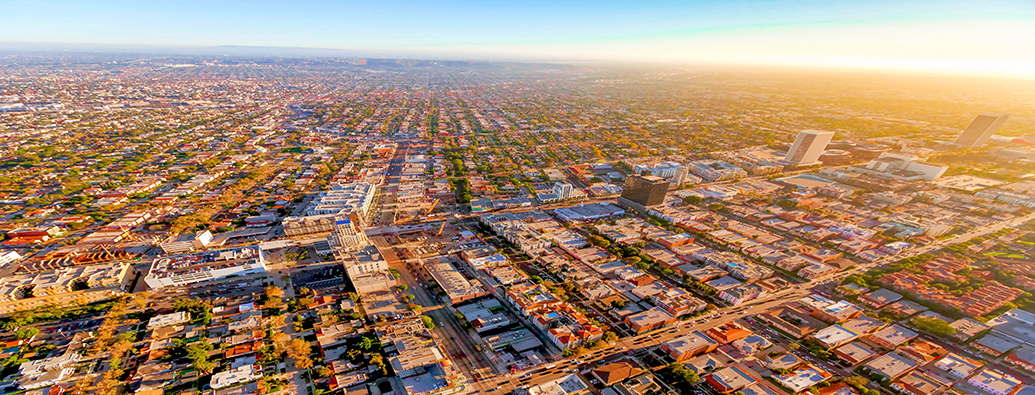
Los Angeles’s General Plan Land Use Element is composed of 35 Community Plans that cover the entire 473 square miles of the City. These Community Plans are periodically updated to reflect changes in the areas they govern, ensuring the plans remain effective tools for guiding growth and development. It’s City Planning’s responsibility to keep them current and relevant through a comprehensive update process to ensure that each Community Plan contains policies and implementation tools that reflect the ever-evolving visions for our neighborhoods.
Community Plans are generally viewed as the cornerstone of the City’s long-range planning efforts. This collection of 35 plans comprise the City’s State-mandated “Land Use Element,” one of seven required elements of a General Plan. Community Plans are the focal point for determining how the City will approach growth within a community, and what goals and policies will shape that community’s built environment.
As may be evident, the main purpose of a Community Plan is to inform residents and developers as to what types of uses and development will be permitted, and at what densities and intensities a particular project may be built. Additionally, Community Plans outline strategies for how to accommodate anticipated growth and guide the decision-making process when projects are proposed.
Because situations such as population growth or decline, a changing climate, shifting employment centers, transportation needs and housing demands, as well as various other factors can fluctuate beyond what experts may forecast, it is vital to periodically update these planning documents to incorporate appropriate designations of land for the anticipated range of uses needed.
In addition to land use, Community Plan updates also help center citywide discussions about mobility and transportation, urban design, public facilities and services, natural and cultural resources, and economic development.
The Community Plan program, as it is known today, was established in the 1960s. At that time the plans, which were often referred to as “Broadsides,” consisted of a large fold out map with policy text and were updated as needed through the 1980s.
In the late 1980s, a comprehensive “Community Plan Revision” program was established, departing from the Broadside format, and incorporated more extensive analysis, goals and policies. During the late 1990s, the Department’s focus was on the adoption of the Framework Element of the General Plan, and a more streamlined “Community Plan Update” program was initiated that brought nearly all of the City’s Community Plans through adoption between 1996 and 2005.
While an ambitious “New Community Plan” program to update all of the City’s Community Plans was launched in 2006, the program was beleaguered by resource constraints, and a fiscal crisis. From this program, two Community Plans were successfully updated in 2015.
To address long-standing issues related to staffing, the Mayor and City Council in recent years funded complete teams that are integral to the formation, evaluation, and adoption of Community Plans at a citywide level in a manner that would be sustained on an ongoing basis.
The Department's approach to the update process always includes community input from a wide variety of interested parties to ensure that various stakeholder perspectives are received and considered in forecasting the needs of an area as they work together to identify land use policies and recommendations that will guide the future development of their communities.
Planning teams are continuously adapting documenting materials, presentations, and events to incorporate outreach and engagement efforts, whether they be virtual or in-person. In addition to outreach at community events, neighborhood council meetings, and meetings with community based organizations, planners solicit feedback at public hearings, scoping meetings, webinars, open design studios, and during in-person and virtual office hours.
The Department’s aim is to engage community members in dynamic planning partnerships as we ready each Community Plan Area for the next generation, as stakeholders' participation in the Plan Update process is vital for ensuring that the City’s land use policy accurately reflects each community’s vision for the future.
See where your Community Plan Area is in the Update process at planning.lacity.gov/plans-policies/community-plan-updates